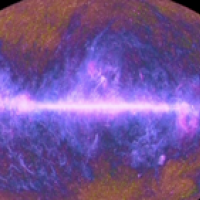
Happy pi day 2025!
It's pi day! That's because the date, written the American way as 3/14, gives the first three digits of that beautiful number, which is usually denoted by the Greek letter $\pi$.
We've celebrated $\pi$ day in a number of ways over the years, from looking at the beautiful maths of curvature to exploring shiny metallic numbers, and from re-visiting some of our favourite podcasts to delving into our Maths in a minute library.
This year, we decided to honour $\pi$ by looking at the number itself, as well as some of its fellow numbers we particularly like. Big and small, irrational and golden, they're all beautiful!

Easy as pi? — Let's start with the star itself. Find out the definition of $\pi$, why its value can only ever be approximated, what it has to do with waves, and why it contains the history of the Universe.

The square root of 2 is irrational — This means that it can't be written as a fraction and has an infinite decimal expansion which never repeats. The proof that this is the case is short and elegant, probably one of the most beautiful in mathematical history (and possibly the most deadly as its discoverer is said to have been murdered for it).

The golden ratio — As famous as $\pi$ itself, or perhaps even more, is the golden ratio. It is linked to the Fibonacci sequence and is the most irrational of all irrational numbers. See here for a brief introduction to the number and here for more detailed information.
Mysterious 6174 — This number is less famous, but no less interesting. You'll meet it when you perform a simple operation using a calculator. Try it yourself and be amazed!

Too big to write, but not too big for Graham — Graham's number is big. It's bigger than the age of the Universe, whether measured in years or in seconds. It's bigger than the number of atoms in the observable Universe. It's so big, the Universe does not contain enough stuff on which to write its digits. Intrigued? Find out more in this article.